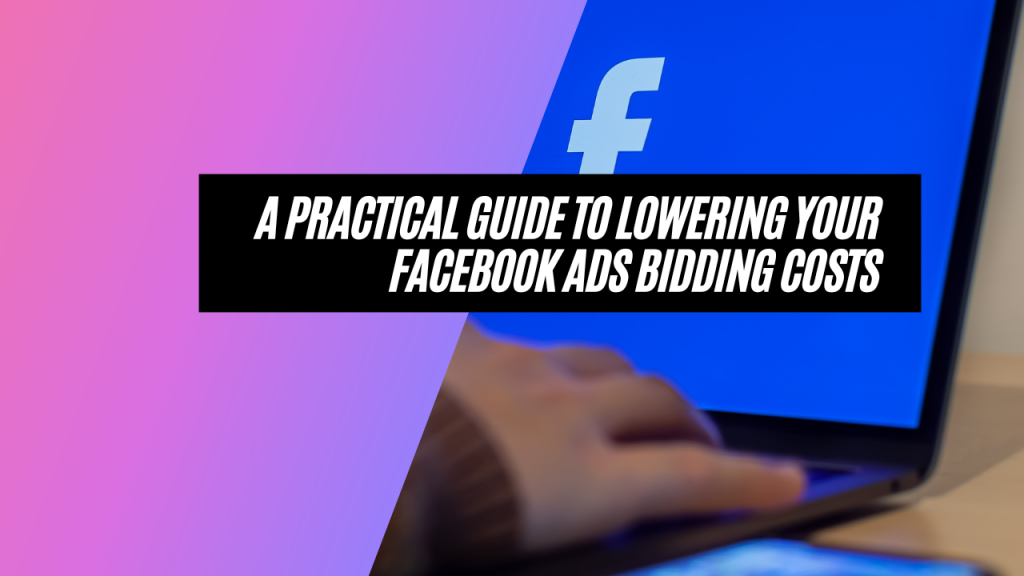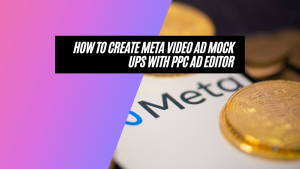How to Reduce Bidding on Facebook Ads: A Step-by-Step Guide
If you’re looking to promote your brand, products, or services on Facebook, chances are that you’ve had to navigate the world of Facebook ads bidding. It can be a daunting task for even the most seasoned of advertisers. However, with the right steps, you can reduce your bidding and maximize your advertising budget. In this article, we’ll discuss how to do just that: a step-by-step guide to reducing bidding on Facebook ads.
Understanding Facebook Ads Bidding
Before we dive into the steps, let’s first understand what Facebook Ads bidding is.
Facebook Ads Bidding is a crucial aspect of advertising on Facebook’s network. It is the process of paying for ad space on Facebook based on an auction system. It’s the way Facebook decides which ads to show to which users. Essentially, it’s competing against other advertisers’ bids to have your ad shown to a specific audience. The highest bid doesn’t necessarily win—there are various factors that come into play, which we’ll discuss later in this article.
What is the Auction System for Facebook Ads Bidding?
Facebook’s auction system is a complex algorithm that takes into account various factors to determine which ad will be shown to a specific user. The auction system is designed to ensure that users see the most relevant and engaging ads. Facebook’s algorithm considers the bid amount, ad quality, ad relevance, estimated action rates, and user data (such as interests and demographics) to determine which ad to show to a specific user.
How Does Facebook Ads Bidding Work?
Facebook Ads Bidding works on an auction system where advertisers set a bid amount for their ads. Facebook then takes into account a variety of factors, such as ad relevance, estimated action rates, and bid amount to determine which ad to show to a specific user. The advertiser with the highest bid doesn’t always win, but rather, it’s a combination of budget, bid, and ad quality that determines which ad will be shown.
It’s important to note that Facebook does not charge the full bid amount for an ad. Instead, the advertiser only pays the minimum amount necessary to beat the next highest bidder. This means that advertisers can often pay less than their maximum bid amount.
Factors Affecting Facebook Ads Bidding
There are a variety of factors that come into play when it comes to Facebook Ads Bidding. Here are a few:
- Ad Quality: Facebook values high-quality ads that are visually appealing, engaging, and relevant to the target audience. Ads that are low-quality or misleading will not perform well and will likely be shown less frequently.
- Bid Amount: The bid amount is the maximum amount an advertiser is willing to pay for a specific action, such as a click or impression. However, as mentioned earlier, advertisers may end up paying less than their maximum bid amount.
- Ad Relevance: Ad relevance refers to how well an ad matches the interests and needs of the target audience. Ads that are highly relevant are more likely to be shown to the target audience.
- Estimated Action Rates: Facebook uses historical data to estimate how likely a user is to take a specific action, such as clicking on an ad or making a purchase. Ads with higher estimated action rates are more likely to be shown to the target audience.
- User Data: Facebook collects data on user interests, demographics, and behaviors. This data is used to show ads to users who are most likely to be interested in the product or service being advertised.
By understanding these factors, advertisers can optimize their ad campaigns to increase their chances of winning the auction and having their ads shown to their target audience.
Importance of Reducing Bidding Costs
Now that we’ve covered the basics of Facebook Ads Bidding, let’s discuss why it’s important to reduce bidding costs.
One of the main reasons to reduce bidding costs is to maximize your advertising budget. By doing so, you can run more ads, reach more people, and ultimately drive more conversions. This is especially important for small businesses or those with limited advertising budgets. By reducing your bidding costs, you can stretch your budget further and get more bang for your buck.
In addition to maximizing your advertising budget, reducing your bidding costs can also improve your return on ad spend (ROAS). The lower your bidding costs, the higher your ROAS. This means that you’ll be able to generate more revenue compared to the amount you’re spending on advertising. This is a key metric for measuring the success of your advertising campaigns.
Another benefit of reducing your bidding costs is staying competitive in the ad space. With so many advertisers vying for ad space, it can be difficult to stand out without breaking the bank. By being able to bid lower while still maintaining a high-quality ad, you’ll be able to compete against other advertisers and reach your target audience without overspending.
It’s also worth noting that reducing your bidding costs doesn’t necessarily mean sacrificing the quality of your ads. By optimizing your ad targeting, ad copy, and other elements of your ad campaign, you can still create effective ads that resonate with your target audience. In fact, by focusing on creating high-quality ads, you may be able to reduce your bidding costs even further, as Facebook rewards advertisers who create engaging and relevant ads.
Step 1: Set Clear Campaign Objectives
The first step to reducing your bidding costs on Facebook Ads is to set clear campaign objectives. This is crucial to ensure that your ads are targeted towards the right audience, and that you’re not wasting money on irrelevant clicks.
Choosing the Right Campaign Objective
Choosing the right campaign objective is essential to the success of your Facebook Ads campaign. There are many objectives to choose from, such as awareness, consideration, or conversion. Each objective serves a specific purpose and is designed to help you achieve your marketing goals.
For example, if your goal is to increase brand awareness, you might choose the “Brand Awareness” objective. This objective is designed to reach as many people as possible and increase awareness of your brand.
If your goal is to drive traffic to your website, you might choose the “Traffic” objective. This objective is designed to send people to your website, where they can learn more about your products or services.
It’s important to choose the right objective based on your marketing goals. This will help you optimize your ad spend towards that goal and ensure that you’re getting the best possible results.
Aligning Objectives with Your Marketing Goals
Once you have a clear understanding of your marketing goals, it’s important to choose the campaign objective that aligns with them. This will help you stay focused on your goals and ensure that your ads are targeted towards the right audience.
For example, if your goal is to generate leads, you might choose the “Lead Generation” objective. This objective is designed to collect lead information from people who are interested in your products or services. By choosing this objective, you can optimize your ad spend towards generating leads and ultimately increase your conversion rates.
Similarly, if your goal is to increase sales, you might choose the “Conversions” objective. This objective is designed to encourage people to take a specific action on your website, such as making a purchase or filling out a form. By choosing this objective, you can optimize your ad spend towards driving conversions and ultimately increase your revenue.
Overall, choosing the right campaign objective is essential to the success of your Facebook Ads campaign. By aligning your objectives with your marketing goals, you can ensure that your ads are targeted towards the right audience and that you’re getting the best possible results for your ad spend.
Step 2: Optimize Your Target Audience
Reducing your bidding costs on Facebook Ads is not just about creating an attractive ad but also about optimizing your target audience. This is the second step to take to ensure you get the most out of your ad spend.
Utilizing Facebook’s Targeting Options
Facebook offers a plethora of targeting options to help you reach your ideal audience. These options include age, gender, location, interests, behaviors, and more. Take advantage of these options to narrow down your audience and improve the relevance of your ads. The more relevant your ad is to your target audience, the less you’ll have to pay to reach them.
For instance, if you’re selling fitness products, you can target people who are interested in fitness and health-related activities. This way, you can be sure that your ad is being shown to people who are more likely to be interested in your products.
Narrowing Down Your Audience for Better Results
Narrowing down your audience will help you create more targeted ads. For example, instead of targeting a broad audience of “women aged 18-35,” narrow it down to “women aged 18-35 who are interested in fitness and live in the United States.” This will help ensure that your ad is being shown to people who are more likely to be interested in your product or service.
By creating a narrower audience, you can focus your ad spend on people who are more likely to convert, which can ultimately save you money in the long run. You can also use Facebook’s Lookalike Audience feature to target people who are similar to your existing customers.
A/B Testing Your Target Audience
Lastly, it’s important to conduct A/B testing on your target audience to see which performs best. Try creating two different ads targeted at two different subsets of your audience, and see which performs better. Once you determine the most effective target audience, you can optimize your ad spend towards it.
Remember, optimizing your target audience is a continuous process. As your business grows and changes, so will your target audience. Keep testing and refining your audience to ensure that your ad spend is being used effectively.
Reducing your bidding costs on Facebook Ads can be a challenge, but it’s essential to maintain a competitive advantage in the ad space. By setting clear campaign objectives and optimizing your target audience, you’ll be able to reduce your bidding costs, maximize your advertising budget, and improve your return on ad spend (ROAS).





